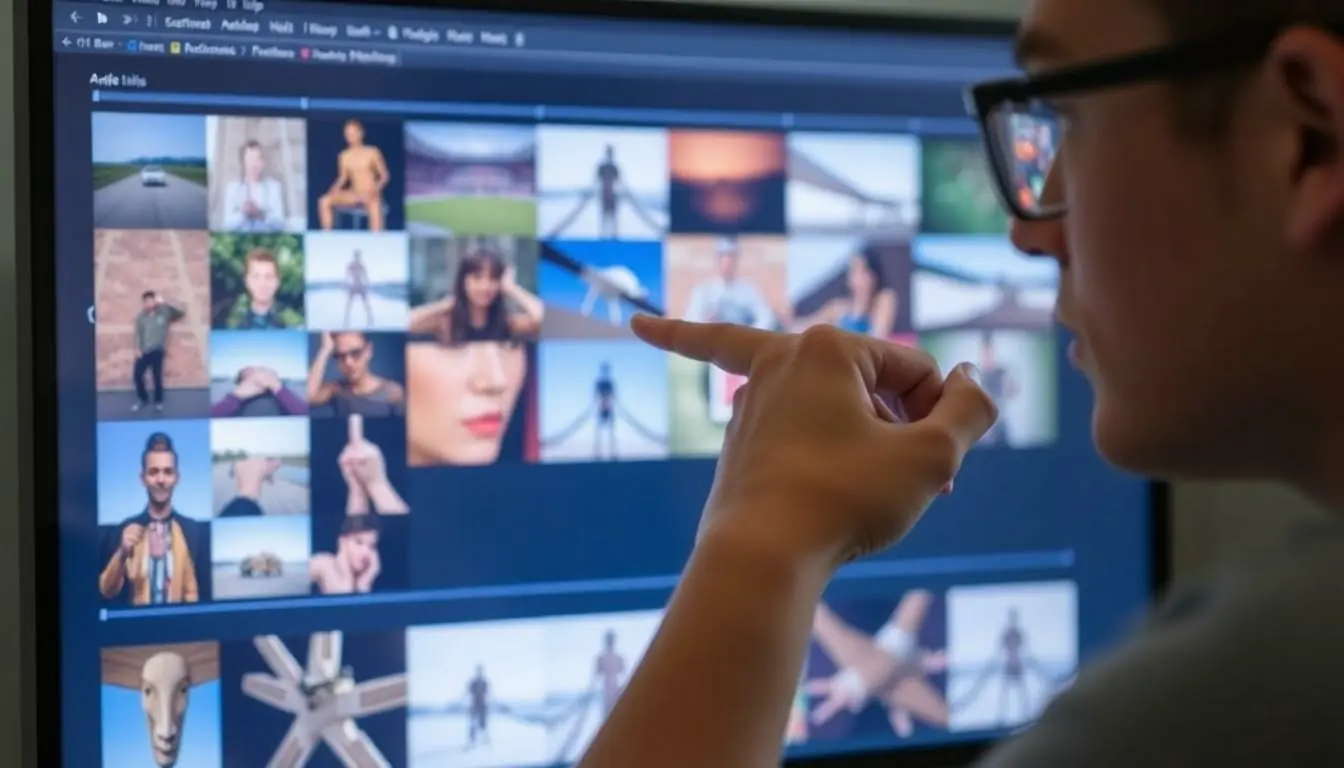In a world where artificial intelligence is evolving faster than a cat video goes viral, the question arises: can ChatGPT look at images? Picture this: you’re chatting with a witty AI that can decode your thoughts, but when it comes to your adorable pet photos, it just blinks back at you. Frustrating, right?
Table of Contents
ToggleOverview of ChatGPT Capabilities
ChatGPT excels in generating human-like text responses. Its conversational abilities allow users to engage in informative discussions across various topics. Users often appreciate its capacity to provide relevant answers, contextually understand queries, and maintain dialogue continuity.
Despite these strengths, ChatGPT lacks the ability to process or interpret images. This limitation poses a challenge for users who wish to share visual content, such as images of pets or landscapes. Engaging with richer media requires a different set of technologies, which ChatGPT does not possess.
Natural language processing forms the core function of ChatGPT. Text-based interactions enable it to offer valuable insights and support. However, users must rely solely on words when communicating with the AI. The absence of image recognition means sharing visual moments doesn’t translate into meaningful exchanges with the model.
Collaborative platforms enhance ChatGPT’s usability, making it versatile in various scenarios. Implementations often integrate it into applications that focus on textual content, providing dynamic user experiences. Enhancements in AI technology may lead to future advancements, but as it stands, text remains the sole medium through which ChatGPT operates.
Projecting forward, users can expect continued improvements in conversational AI, even if immediate capabilities remain limited. Understanding these factors helps set realistic expectations for interactions with ChatGPT when considering the type of content involved.
Understanding Image Recognition

Image recognition involves the ability of a machine or software to identify objects, people, or features within an image. It primarily relies on algorithms capable of interpreting pixel data to produce meaningful outcomes.
How Image Recognition Works
Machine learning plays a crucial role in image recognition. This technology utilizes neural networks to analyze numerous images during the training process. Training datasets consist of labeled images that help the system learn to differentiate between objects. After training, algorithms can process new images, extracting features and recognizing patterns that match known categories.
Current Limitations of AI Image Processing
Despite advances, AI image processing remains limited. Many systems struggle with contextual understanding, failing to interpret nuances within images. Challenges such as varying lighting conditions and object occlusions often hinder accuracy. Furthermore, ethical considerations, including data privacy and bias in image classification, pose significant hurdles. Current AI models predominantly rely on visual data, lacking the contextual depth required for comprehensive image understanding.
ChatGPT’s Functionality With Images
ChatGPT lacks the capability to interpret images. Users often find it frustrating when they wish to share visual content, such as pet photos, as the AI only engages through text.
The Evolution of ChatGPT
ChatGPT has evolved significantly since its inception. Initially designed for text-based interactions, it has improved in generating coherent responses. Each iteration aims to enhance dialogue continuity and contextual understanding. Developers focus on natural language processing to refine its conversational abilities. Despite these advances, image recognition remains outside its functionality, creating a gap in user experience.
Current Trends in AI Technology
AI technology is advancing rapidly across various fields. Image recognition continues to develop, with machine learning playing a crucial role. Researchers are exploring neural networks to enhance the accuracy of image processing. Current trends emphasize overcoming challenges like context and biases in classification. While ChatGPT excels in text-based applications, complementary technologies are necessary for effective image handling. Integrating these advancements could shape future iterations of conversational AI.
Use Cases for Image Interaction
ChatGPT currently lacks the ability to process images directly. However, several use cases illustrate its potential effectiveness alongside image recognition technologies.
Practical Applications
ChatGPT enhances user experiences in text-based interactions. For instance, in online customer support, it assists users by answering questions about products based on image descriptions. Users can describe an item, and ChatGPT provides relevant information. In education, students might describe scientific images while seeking explanations. This collaboration allows for rich dialogue, despite the lack of direct image processing. Instances of sharing artistic influences in creative communities also benefit from text descriptions, where artists explain visual concepts effectively.
Potential Innovations
Emerging technologies aim to bridge the gap between text-based AI and image recognition. Advances in machine learning could lead to future iterations where ChatGPT interacts with images through integration with recognition systems. Researchers are exploring seamless interfaces where visual inputs translate into actionable text-based responses. This synergy could revolutionize user interactions by enriching conversations with contextual visual data. Innovative applications might include interactive learning tools that combine image content with AI dialogues, fostering deeper understanding and engagement among users.
Ethical Considerations
Data privacy raises significant concerns in the realm of AI image recognition. Users often worry about how their visual content may be stored or misused. Transparency in data usage is crucial for building trust among users and developers.
Bias in image classification presents another ethical challenge. Algorithms trained on biased datasets may produce skewed results, leading to unfair treatment of certain groups. Addressing this bias requires ongoing evaluation and refinement of training datasets to ensure equitable outcomes.
Accountability for AI systems remains a vital aspect of ethical considerations. Developers must establish protocols that ensure responsible use of image recognition technologies. Implementing guidelines for AI behavior can help mitigate potential harm caused by inaccurate assessments.
User consent features offer a method to enhance ethical practices. Integrating mechanisms that require explicit consent before analyzing images can protect user autonomy. Such features promote a culture of respect and responsibility in AI interactions.
Collaboration between AI researchers and ethicists fosters a more comprehensive approach to these concerns. Cross-disciplinary teams can identify potential pitfalls and develop solutions that prioritize both innovation and ethics. As AI continues to evolve, ongoing discussions about ethics must remain at the forefront of development strategies.
ChatGPT’s current limitations in image interpretation highlight the need for distinct technologies to handle visual content. While it excels in text-based dialogue and generates coherent responses, the absence of image processing capabilities restricts meaningful exchanges involving visuals.
As AI technology progresses, there’s potential for future iterations of ChatGPT to integrate image recognition systems, creating a more holistic interaction experience. This evolution could enhance user engagement and provide richer context in conversations.
Addressing ethical considerations and ensuring responsible use of AI technologies will be crucial as these advancements unfold. Users can look forward to an exciting future where text and images converge, transforming how they interact with AI.





